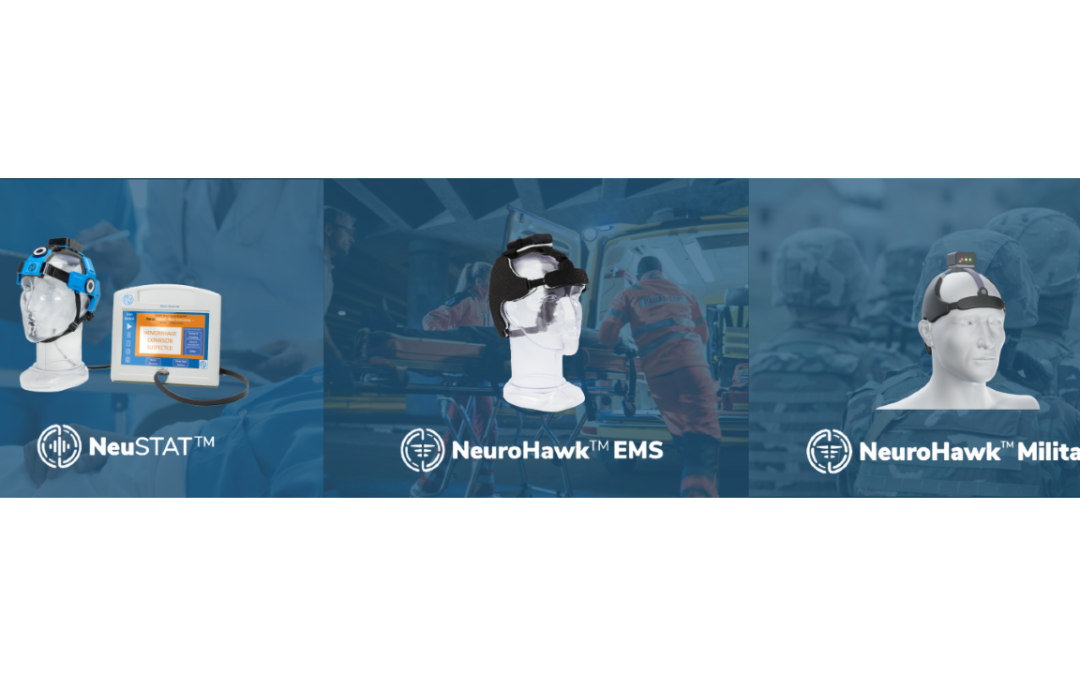
Behind the Science: Non-Invasive Brain Scanners
Time is brain. You’ll hear us say that a lot at Sense Neuro Diagnostics. We’re on a mission to aid personnel to detect, monitor, and manage brain conditions in real-time. Once a brain cell dies, there’s no getting it back. If you or a loved one is riding in an ambulance going to a hospital ill-prepared for a brain injury or waiting in the ER for a CT scan, those could be crucial moments slipping away that you’ll never get back, possibly resulting in permanent disability or death.
Let’s look at the numbers. In the United States, there are about 800,000 strokes per year. That increases to 15 million worldwide. When looking at traumatic brain injury (TBI), there are 1.5 million in the U.S. per year. Worldwide, there are 50 million. Up to 80,000 patients are misdiagnosed annually. That’s a large margin for error.
That’s why we’re passionate about creating easy to use, easy to read, and fast brain scanners to detect traumatic brain injury and stroke. Let’s break down how this efficient technology works.
Sense Neuro’s Solution
Our non-invasive headsets have nine antennae that use a safe, low-power radio frequency (RF) to scan the entire cranial vault. The algorithm then interprets the signals to detect TBI and stroke by subtype and expanding hemorrhage bleeds .5mL and greater.
And it’s easy to operate. Just place it on any patient’s head and adjust based on head size. A single scan collects 360 data points across the entire brain in just 2.5 seconds. One antenna transmits while the other eight receive and that cycle repeats for all 72 pairs. These cycles are repeated over a 4 minute window, giving complete scan results in a little over 4 minutes.
It detects stroke or TBI because the type of tissue affects the signal in different ways. Healthy brain tissues have unique electrical properties that alter the RF wave as it passes through the tissue. Similarly, hemorrhages and ischemic tissue cause distinctive changes to the RF signal.
Senior Vice President of Product Development Joe Korfhagen says, “We build our technology to be something that would be simpler to use, that can be placed quickly and give results quickly and accurately and cover the entire cranial vault so that we can detect bleeds anywhere in the brain.”
Sense has developed three devices using the same technology. Let’s break down the differences in each one.
NeuStatTM
This device is perfect for the ER for TBI triage or ICU to monitor brain bleeds. We believe it will reduce treatment costs and improve outcomes by allowing patients to go home sooner. This headset comes with an attached monitor that will give a simple, objective output that is easy to read.
NeuroHawkTM EMS
With slight changes, this headset is perfect for an ambulance as it is small, wireless, and can be easily placed for stroke and TBI triage. The main difference is that the results come through a mobile app. Then, paramedics can take the patient to a hospital that can give them the proper care. Other benefits include improving ER efficiency and reducing malpractice exposure. We’ve worked with local fires departments, and they agree that this is a simple, easy to use device that fits in their rig.
NeuroHawkTM Military
Similar to NeuroHawkTM EMS, this device is also wireless and gets results through a mobile app. It is perfect in field use for TBI triage and to monitor TBI bleeds. The Defense and Veterans Brain Injury Center reports more than 410,000 TBIs among U.S. service members in the last two decades.
“I’m very proud that Sense Neuro has done this,” says Chief Commercial Officer and retired Air Force Captain Eric Bailey. “And I’m very proud of the U.S. military for backing this product and hopefully ultimately we can bring this to the soldiers that need it.”
Our Vision
CEOGeoff Klass says our non-invasive brain scanners will meet a tremendous unmet medical need. “This device, the use of our technology in this market, is going to completely change how we triage and monitor patients that have suffered from a stroke or traumatic brain injury for those who have suffered a stroke or traumatic brain injury,” Klass says.
We’re excited to bring this technology to life. In the future, we believe we can expand use to concussion monitoring, oncology, all neurodegenerative care, and sudden cardiac arrest. If you would like to learn more, request a pitch deck here.

